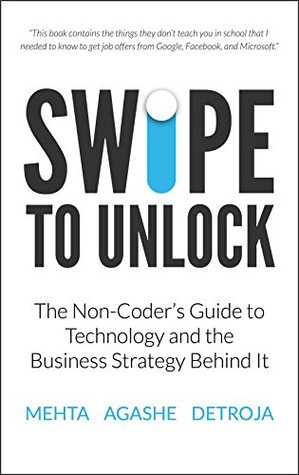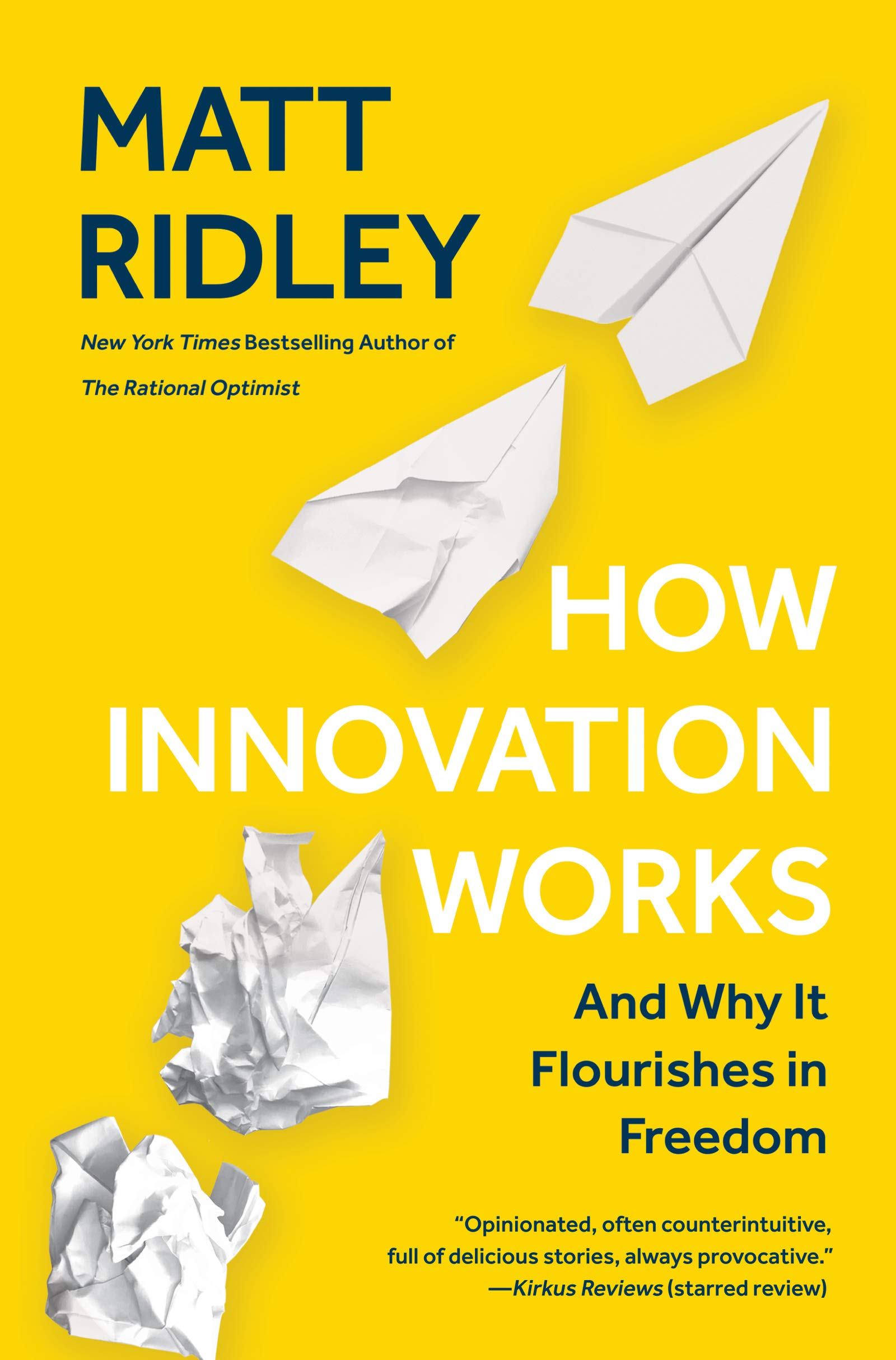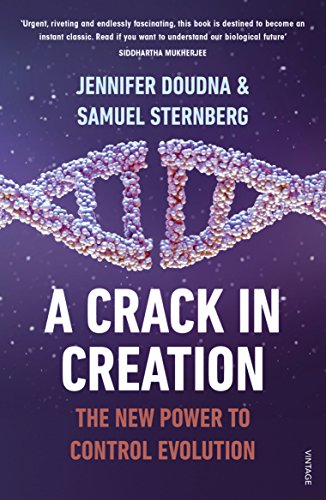Swipe to Unlock
by Neel Mehta, Parth Detroja & Adi Agashe
- Technology
- Ashto =
- Jonesy =

What You Will Learn from Swipe to Unlock
This week, Ashto and Jonesy delve into Swipe to Unlock: an introduction to technology and business strategy concepts, and a compulsory read for anyone pursuing a career in the tech industry. Understanding technology is becoming essential no matter what you do for a living. Doctors are now using artificial intelligence to diagnose patients. Farmers are using drones to grow better crops. If the world’s biggest companies used to be oil and electric firms, they have now been replaced by the likes of Apple, Amazon, Facebook, Google and Microsoft.
In this book, Aditya Agashe, Neel Mehta and Parth Detroja use real-life examples to break down software, hardware and business strategies and show you the tools to understand them better. To learn these technological concepts, you don’t need to be a master coder. Whether it’s the ins and outs of the internet or the business strategies of tech giants, the authors of Swipe to Unlock believe that everything is understandable in plain, simple English. Swipe to Unlock gives you a peek under the hood of the technology you use every day, decodes tech’s biggest buzzwords, and shows you how technology is changing society for better or worse.
Software Development
Let’s start our exploration of the world of technology by looking under the hood of tools, programs and apps you use daily.
How does Google search work?
When you search for something on Google, the search engine combs through over 30 trillion web pages and finds the top 10 results for your question. Finding the top 10 things out of 30 trillion is complex, yet google does a quick and excellent job on this. How? Google doesn’t visit every page that shows up when you search for something. It stores information about existing web pages in its databases and uses algorithms that read those databases to decide what to show you.
Crawling
Google’s algorithm builds a database of every web page on the internet. Google uses a program called spiders to ‘crawl’ over webpages until it’s found all of them. Then, the spiders start on a few web pages and add those to Google’s list of pages, called the index. The spiders would follow all the outgoing links on those pages and find a new set of pages, which they add to the index. The process is repeated until Google can’t find anything else. This is an ongoing activity as Google always adds new pages to its index or updates pages when they change.
Word search
When you search google, it grabs your query and looks through its index to find the most relevant web pages. How might it do this? The simplest way is to look for the occurrences of a keyword, like hitting Ctrl + F in a long word document. But if an engine counted the number of times ‘snickers’ appeared on a webpage, anyone could make a random page that just said ‘snickers, snickers, snickers’ and easily jump to the top. Clearly, that’s not useful.
Page rank
Instead of keyword density, Google’s core innovation is an algorithm called page rank. The founders noticed that you could estimate a page’s importance by the number of other pages linked to them. It’s like looking at famous people surrounded by a crowd at a party.
The Internet
What happens when you type ‘Google.com’ and hit enter?
Website address
Before we talk about websites, let’s talk about building addresses. Every building has an address so people can find it quickly and consistently. If we told 50 people to go to 1,600 Pennsylvania Avenue Northwest Washington, DC 20500, they’d all end up in the same place. Even if someone had never been to the US, they’d find a way to get to the building. Every webpage has its address. Like building addresses, webpage addresses make it easy for different people to get to the same page. If you sent that link to 50 friends, they’d end up on the same webpage. This webpage is called the Uniform Resource Locator, or URL.
IP address
The catch is most computers don’t understand domain names. They think in terms of numerical codes called IP addresses. That’s why every website has at least one IP address, like how most people have a cell phone number. Your computer can only go to websites if it recognises their IP addresses.
What path does information take from one computer to another?
Information is broken into tiny packets and sent through various intermediate computers until it reaches its destination. Each packet takes its own path from a website’s server to your computer or phone. But what do these paths look like? Each intermediate point is a computer that relays a packet of information along to the next one. Each trip between computers is called a hop. It’s very similar to how packages are sent in the mail. They often stop at intermediate post offices before reaching the main destination.
Cloud Computing
In the early 2000’s, you’d go to blockbuster to rent movies, buy Photoshop and Microsoft Office from Best Buy, or store your company data in a massive computer room at your headquarters. Nowadays, you binge movies online with Netflix, pay monthly subscriptions for Photoshop, and store your company’s files on platforms like Dropbox or Amazon Web Services. All three of these changes have a common element called the Cloud.
Traditional vs cloud computing
Traditionally you’d have apps like MS word and store files on your laptop. Google Drive gives you 15 GB of storage for free, and you pay a little extra for more space. Access your stuff anywhere, own nothing and pay only for what you need. This new computing model is called ‘cloud computing’ or ‘the Cloud’. Instead of owning your car or computer, you can get your files or transportation on demand from anywhere with an internet connection.
Data centres
When you visit Google Drive in your browser, your files show up like magic. But if these aren’t on your computer, where are they actually located? When you make a google doc on the drive, all your text and photos are stored on Google’s computers instead of your own. Whenever you run Gmail, the email processing is also done on google’s computers instead of your own. When we say Google’s computers, we don’t mean an employee’s laptop. Google doc lives on their servers, which are powerful computers that specialise in storing data and running apps and websites. Servers are often stored in huge buildings called data centres, featuring racks of stacked servers.
Security
When you put something on someone else’s computer, you trust them to keep your data secure. Google’s data centres have custom-designed electronic access cards, including alarms, vehicle access barriers, perimeter fencing, metal detectors and biometrics.
SAAS (Software as a service)
SAAS s a business model where customers pay for subscriptions for the software to be delivered over the internet. Most SAAS apps may run online, but sometimes you can still run them on your own machine (for example, Photoshop).
Benefits of the Cloud
Renting servers with Amazon Web Services might be far more accessible than running your own servers since Amazon will take care of upgrades, security and other maintenance issues.
Case study: How does Netflix handle sudden spikes in viewership?
For example, Netflix aired House of Cards in 2015, and people flocked to Netflix to stream the show. The 30% increase in traffic was significant. In 2008, Netflix owned their own servers, but over the years, it switched to Amazon Web Services, which provided them with three benefits:
- Elasticity/ Cost-effective
When Netflix owned its own servers, it would need to invest more cost for peak usage. The problem was when it wasn’t at its peak, the company would have to overpay. But AWS only requires you to pay as much as you need. - Scalability
AWS lets you grow or scale users as quickly as you need. Netflix increased 1,000 fold from 2007 to 2015, and without the Cloud, it would need to keep installing servers. - Redundancy
Using AWS is more reliable than owning your own data centres. The AWS cloud has lots of built-in redundancy – they have multiple copies and versions of the same information across different data centres in different locations. So if anything went wrong in one of them, they could quickly switch over to another, and the end user wouldn’t know the difference. It’s like how humans have two kidneys. We can live with one, but we have the second one just in case the other fails. So next time you binge-watch Netflix, thank the engineers who decided to move the server to the Cloud.
Discover Other Technology Books in Our Library
Browse our website and explore more books about science and technology. Some of our popular titles include A Crack in Creation by Jennifer Doudna & Samuel Sternberg, The Future Is Faster Than You Think by Peter Diamandis and Steven Kotler, and The Inevitable by Kevin Kelly.





